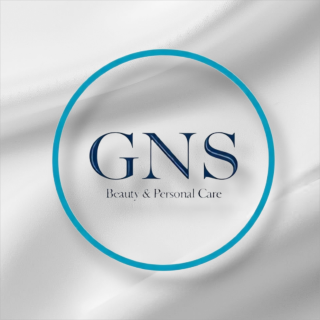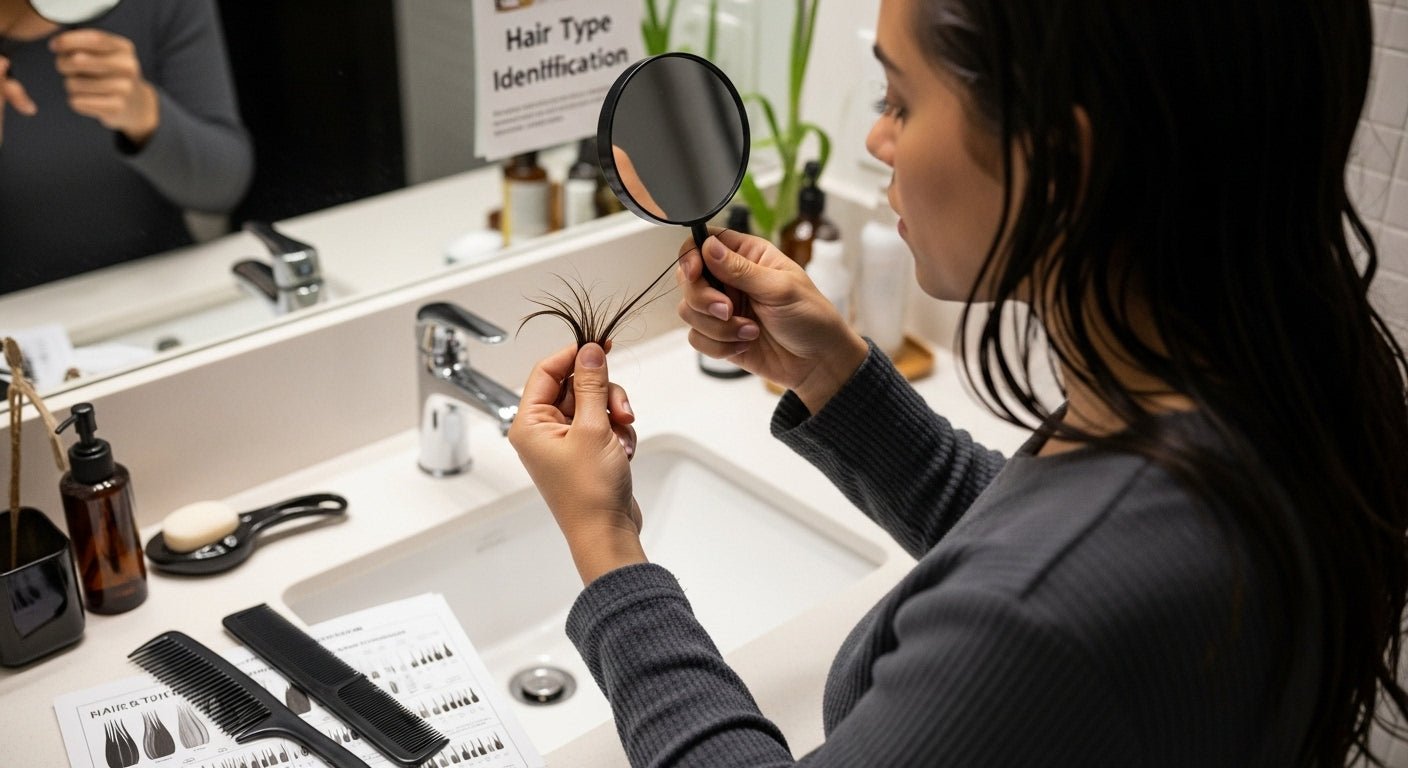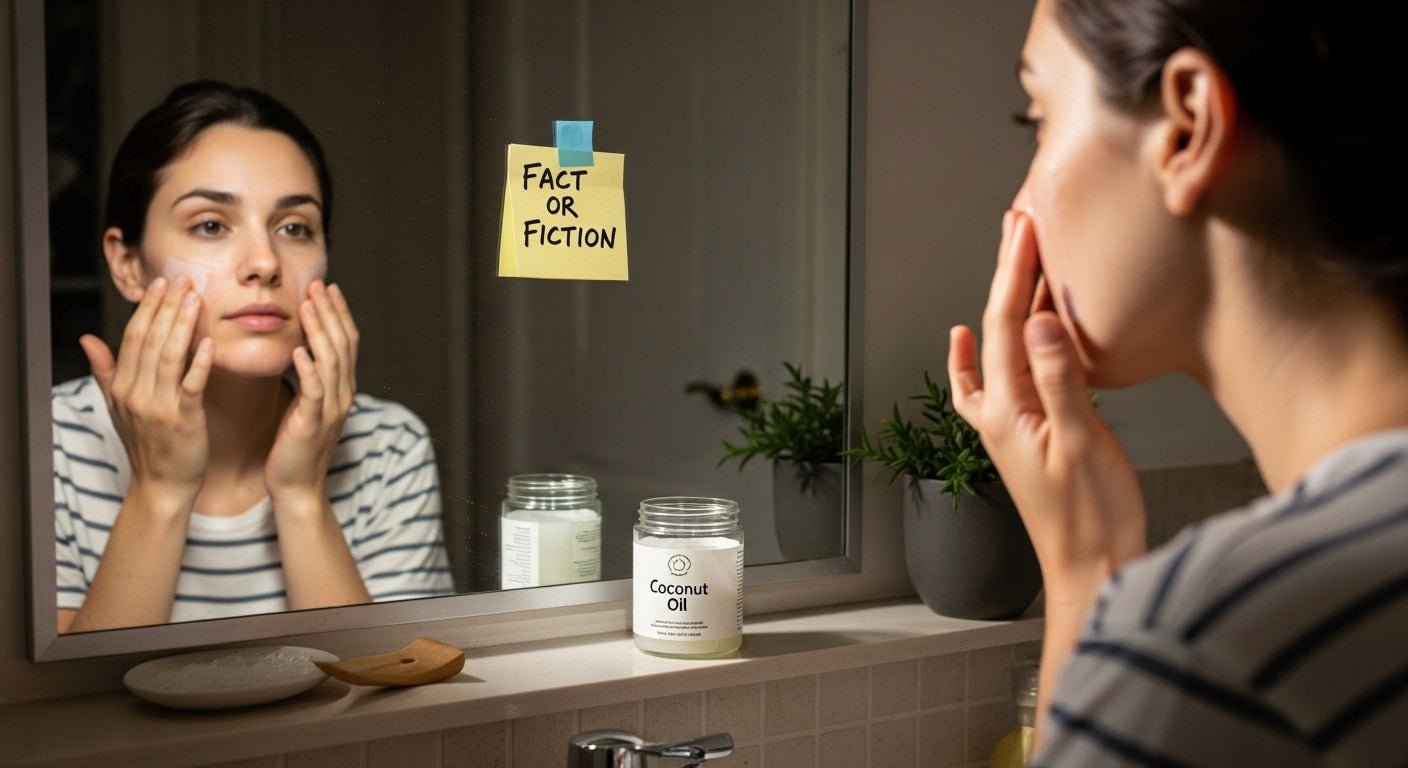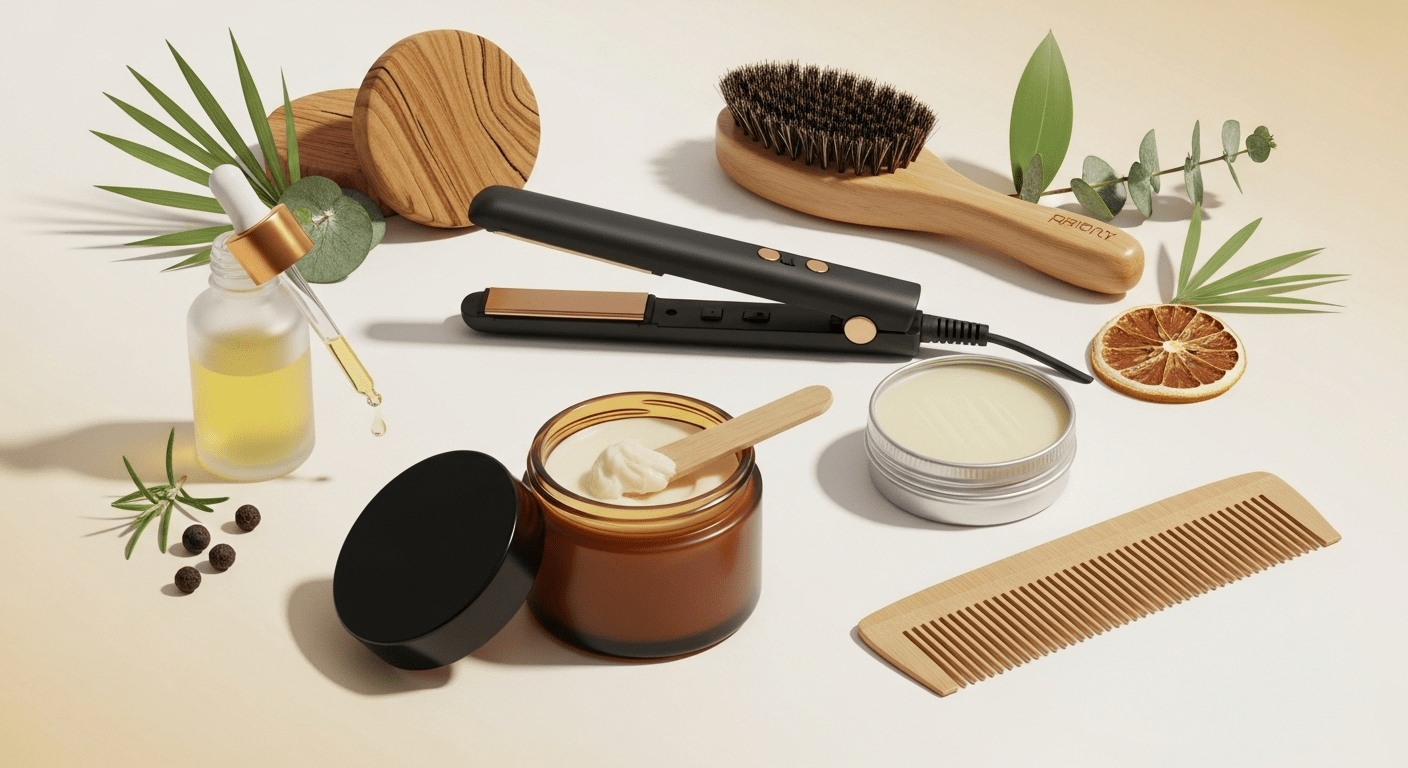Everyone’s hair looks different and feels different, so trying to follow one-size-fits-all routines rarely works for most people. Here is something most people miss. Over 65 percent of people have a mix of hair types, not just one. That means the secrets to healthy, great-looking hair do not start at the drugstore or salon. They actually start by getting to know the tiny quirks of your own hair, setting you up for a routine that finally fits you—not the crowd.
Table of Contents
- Step 1: Identify Your Unique Hair Type
- Step 2: Analyze Your Hair Concerns And Goals
- Step 3: Research Suitable Products For Your Hair Type
- Step 4: Create A Tailored Hair Care Routine
- Step 5: Monitor Results And Adjust As Needed
Quick Summary
| Key Point | Explanation |
|---|---|
| 1. Identify your unique hair type | Determine your hair’s texture, pattern, and porosity to tailor care. |
| 2. Assess hair concerns and set goals | Analyze your hair health and document specific objectives for improvement. |
| 3. Research suitable hair products | Choose products based on ingredients and compatibility with your hair type. |
| 4. Create a personalized hair care routine | Establish a routine that balances cleansing, conditioning, and protection specific to your hair needs. |
| 5. Monitor results and adjust as needed | Keep a hair journal to track changes, adapt strategies, and consult professionals when necessary. |
Step 1: Identify Your Unique Hair Type
Understanding your hair type is the foundational step in creating a personalized hair care routine that transforms your locks from stressed to stunning. Each hair strand carries unique characteristics that demand specific care strategies, making identification crucial for achieving optimal hair health and appearance.
To determine your hair type, you will need a clean, freshly washed head of hair and a simple observation process. Begin by examining your hair’s texture when it is completely dry and free from styling products. Hair texture refers to the thickness of individual strands and typically falls into three primary categories: fine, medium, and thick. Fine hair appears thin and delicate, medium hair has a balanced diameter, and thick hair feels substantially robust when rolled between your fingers.
Next, assess your hair’s pattern or curl type. According to the International Journal of Trichology, hair patterns range from completely straight to tightly coiled. These patterns are typically classified into four main types:
- Type 1 (Straight): Hair that falls flat and has no visible curl pattern
- Type 2 (Wavy): Hair with loose, undefined S-shaped waves
- Type 3 (Curly): Hair with more pronounced, springy curls
- Type 4 (Kinky/Coily): Extremely tight, compact curl patterns
To further refine your understanding, pay attention to additional characteristics like hair porosity and scalp condition. Porosity determines how effectively your hair absorbs and retains moisture, which significantly impacts product selection and treatment approaches. You can perform a simple water drop test: place a clean hair strand in a glass of water and observe how quickly it absorbs or sinks.
Remember that most people have a combination of hair types, so do not be discouraged if you cannot perfectly categorize your hair into one single classification. The goal is to understand your hair’s general characteristics and unique needs. By carefully observing your hair’s texture, pattern, and behavior, you will develop a nuanced understanding that allows you to select targeted hair care products and techniques that enhance your natural hair structure.
To help you accurately identify your hair type and characteristics, use the table below to compare key features for texture, pattern, and porosity.
| Characteristic | How to Identify | Common Categories |
|---|---|---|
| Texture | Examine strand thickness between fingers | Fine, Medium, Thick |
| Pattern | Observe natural shape when dry | Straight (Type 1), Wavy (Type 2), Curly (Type 3), Kinky/Coily (Type 4) |
| Porosity | Place a clean strand in water and observe absorption speed | Low (floats), Medium (slowly sinks), High (quickly sinks) |
| Scalp Condition | Note oiliness/dryness by touch and appearance | Oily, Balanced, Dry |
| Combination Types | Notice if you have more than one feature or pattern | Mixed (e.g., Type 2/3, dry with oily scalp) |
Step 2: Analyze Your Hair Concerns and Goals
After identifying your unique hair type, the next critical step is a comprehensive analysis of your specific hair concerns and personal wellness goals. This introspective process transforms generic hair care into a targeted, personalized strategy that addresses your individual needs and aspirations.
Begin by conducting an honest self-assessment of your current hair health. Hair concerns can range from dryness and breakage to scalp issues and styling challenges. Take time to document your observations systematically.
Look closely in natural light and examine your hair’s current condition. Are you experiencing excessive shedding? Does your scalp feel consistently dry or oily? Are there signs of damage from previous chemical treatments or heat styling?
According to research from the National Institute of Environmental Health Sciences, understanding the potential impact of hair care products is crucial. This means not just focusing on aesthetic goals but also considering long-term hair and scalp health. Consider creating a comprehensive list of your primary objectives, which might include:
- Reducing hair breakage
- Improving overall hair moisture
- Managing scalp health
- Promoting hair growth
- Protecting hair from environmental damage
Develop a realistic timeline for achieving these goals. Some hair transformations happen quickly, while others require consistent, patient care. Be prepared to adjust your approach based on how your hair responds to new treatments. Consider taking baseline photographs to track your progress, which can provide motivation and help you objectively assess changes over time.
Engaging with professionals can provide additional insights. A consultation with a trichologist or professional hairstylist can offer expert perspectives on your specific hair challenges. They can help you develop a nuanced understanding of your hair’s unique characteristics and recommend targeted interventions that align with your wellness goals.
Remember that hair care is deeply personal and interconnected with overall health. Factors like nutrition, stress levels, and lifestyle significantly impact hair quality. Your goals should not just be about external appearance but about nurturing your hair from the inside out.
This table summarizes common hair concerns and corresponding goals to help you clarify your focus before choosing products or routines.
| Hair Concern | Questions to Ask | Typical Goal |
|---|---|---|
| Dryness | Does your hair feel rough or look dull? | Improve moisture and softness |
| Breakage | Do you notice excess split ends or short broken pieces? | Reduce damage and strengthen strands |
| Scalp Issues | Is your scalp flaky, itchy, or irritated? | Restore scalp balance and comfort |
| Excess Shedding | Are you losing more hair than usual? | Promote healthy hair growth |
| Chemical/Heat Damage | Has your hair undergone color, perm, or frequent heat styling? | Repair and protect against further harm |
| Styling Challenges | Is your hair difficult to manage or style? | Increase manageability and ease of styling |
Step 3: Research Suitable Products for Your Hair Type
With your hair type and personal goals clearly defined, the next crucial phase involves researching and selecting products that will genuinely support your hair’s unique needs. This step transforms generic recommendations into a tailored hair care strategy that addresses your specific concerns and promotes optimal hair health.
Product research requires a strategic and informed approach. Begin by leveraging multiple information sources, including professional hair care forums, trusted beauty blogs, and recommendations from trichologists and professional stylists. Social media platforms can also provide valuable insights, particularly from individuals with similar hair textures and concerns. Pay close attention to ingredient lists and product formulations that align with the characteristics you identified in previous steps.
According to research from the International Journal of Trichology, product selection should go beyond marketing claims and focus on scientifically supported ingredients that match your hair’s specific requirements. Look for products that address your particular hair concerns, whether that involves moisture retention, protein balance, scalp health, or damage repair.
Consider creating a comprehensive product evaluation framework that includes key assessment criteria:
- Ingredient quality and concentration
- Match with your specific hair type
- Absence of potentially harmful chemicals
- Price point and accessibility
- User reviews and professional recommendations
Budget-conscious research strategies can help you make informed decisions without overspending. Request product samples, participate in online beauty forums, and watch detailed video reviews from trusted sources. Many beauty retailers offer travel or mini-sized products, allowing you to test formulations without committing to full-sized purchases. This approach minimizes financial risk while helping you discover products that truly work for your hair.
Remember that product compatibility is not universal. What works brilliantly for one person might not yield the same results for another, even with similar hair types. Be prepared to experiment and remain flexible in your approach. Keep a detailed journal documenting your experiences with different products, noting positive and negative reactions. This personal record becomes an invaluable resource in refining your hair care routine over time.
Ultimately, successful product research combines scientific understanding, personal experimentation, and a willingness to adapt. By approaching this step with patience and thoroughness, you are investing in a hair care strategy that celebrates your unique beauty and promotes long-term hair health.
Step 4: Create a Tailored Hair Care Routine
With comprehensive research and understanding of your hair type completed, the pivotal moment arrives to construct a personalized hair care routine that transforms your hair’s health and appearance. This step is about designing a strategic approach that addresses your unique hair characteristics and wellness goals with precision and intention.
Developing a successful hair care routine requires a holistic approach that balances cleansing, conditioning, and protective strategies. Begin by establishing a foundational washing schedule that matches your hair’s specific needs. Not all hair types require daily washing - in fact, over-cleansing can strip natural oils and disrupt your hair’s delicate moisture balance. For instance, individuals with dry or curly hair might benefit from less frequent washing, while those with oily scalps might need more regular cleansing.
According to research from the International Journal of Trichology, your routine should incorporate three primary elements: cleansing, conditioning, and protection. Start by selecting a sulfate-free shampoo that gently removes buildup without causing excessive dryness. Follow with a conditioner specifically formulated for your hair type, focusing on techniques that maximize moisture retention and minimize damage.
Consider structuring your routine around these essential components:
- Gentle cleansing techniques
- Moisture-focused conditioning
- Protective styling and treatments
- Regular scalp care
- Periodic deep conditioning
Consistency is the cornerstone of an effective hair care routine. Implement your new regimen gradually, allowing your hair time to adjust and respond to the changes. Pay attention to how your hair reacts to different products and techniques, being prepared to make subtle modifications. Document your observations in a hair journal, tracking product performance, scalp health, and overall hair appearance.
Incorporate protective styling and maintenance techniques that minimize mechanical damage. This might involve using silk pillowcases, reducing heat styling frequency, and employing techniques like protective braids or updos that shield your hair from environmental stressors. Consider your lifestyle and daily activities when designing these strategies, ensuring your routine remains practical and sustainable.
Remember that a truly effective hair care routine is not static but evolves with your hair’s changing needs. Seasonal shifts, hormonal changes, and lifestyle modifications can all impact your hair’s health. Remain flexible and willing to adjust your approach, viewing your routine as a dynamic, personalized wellness practice that celebrates your hair’s unique beauty and potential.

Step 5: Monitor Results and Adjust as Needed
The final step in crafting your personalized hair care routine is a dynamic process of observation, evaluation, and strategic adaptation. This ongoing journey transforms your initial routine from a static plan into a responsive, evolving strategy that meets your hair’s changing needs and supports its long-term health and vitality.
Effective monitoring requires systematic documentation and honest self-assessment. Begin by establishing a comprehensive tracking system that captures multiple dimensions of your hair’s response to the new routine. Create a dedicated hair journal or digital log where you can record detailed observations about texture, moisture levels, breakage, scalp condition, and overall hair appearance. Take consistent progress photographs under similar lighting conditions to provide visual evidence of changes over time.
According to research from the American Academy of Dermatology, understanding how your hair responds to different products and techniques is crucial for maintaining optimal hair health. Develop a keen awareness of subtle changes, recognizing that hair can react differently based on seasonal shifts, hormonal fluctuations, dietary modifications, and stress levels.
Consider tracking the following key indicators:
- Hair moisture and elasticity
- Scalp health and condition
- Hair growth rate
- Breakage and split end frequency
- Overall hair strength and shine
Patience and objectivity are essential during this monitoring phase. Give each new product or technique a fair trial period, typically 4-6 weeks, before making definitive judgments. Avoid the temptation to change multiple variables simultaneously, which can make it challenging to identify the specific factors influencing your hair’s response. If you notice persistent issues or unsatisfactory results, systematically eliminate or modify individual components of your routine.
Be prepared to consult professionals when needed. A trichologist, dermatologist, or professional hairstylist can provide expert insights into persistent hair challenges and offer specialized guidance. They can help you interpret your observations, recommend targeted interventions, and validate your self-assessment.
Remember that hair care is a deeply personal and evolving journey. Your routine is not a rigid prescription but a living, breathing strategy that grows and adapts with you. Embrace flexibility, maintain a spirit of curiosity, and view each adjustment as an opportunity to understand your hair’s unique language and needs. By approaching your hair care routine with mindfulness and continuous learning, you are not just maintaining your hair but nurturing a profound connection with your personal wellness and self-expression.
![]()
Transform Your Hair Care Routine with Expertly Curated Solutions
You have taken the time to understand your hair’s unique texture, embrace your natural pattern, and explore products that cater to your individual needs. Yet the road to healthier, more radiant hair can feel overwhelming if you are not sure where to find effective products that match your routine. Many hair care journeys stall when the search for the right ingredients and clean formulations turns into frustration and wasted time.

At GNS Beauty & Personal Care, we offer a handpicked collection of high-quality, eco-conscious hair care essentials that align with every routine — whether you need gentle cleansing, moisture-focused conditioning, or protective treatments for your hair type. Shop now to find solutions trusted by wellness-savvy adults who demand healthy results without compromise. Organize your next steps and start building your routine today at GNS Beauty & Personal Care. Take the guesswork out of self-care and treat your hair to the personalized care it truly deserves.
Frequently Asked Questions
What are the different hair types and how can I identify mine?
To identify your hair type, observe the texture (fine, medium, or thick) and curl pattern (straight, wavy, curly, or coily) of your hair when it is dry and free of products. You can also assess porosity by performing a water drop test.
How can I assess my specific hair concerns?
Conduct a self-assessment by evaluating your hair’s health in natural light. Take note of issues like dryness, breakage, or scalp conditions. Make a list of your primary concerns and set realistic goals for improvement.
What factors should I consider when selecting hair care products?
When choosing products, focus on ingredient quality, compatibility with your hair type, and absence of harmful chemicals. User reviews and recommendations from professionals can also guide your selection.
How often should I wash my hair based on my hair type?
Washing frequency varies by hair type. For instance, individuals with dry or curly hair may benefit from washing less frequently, while those with oily scalps may need more regular cleansing. Adjust your routine based on your hair’s specific needs.








Hinterlasse einen Kommentar
Alle Kommentare werden vor der Veröffentlichung geprüft.
Diese Website ist durch hCaptcha geschützt und es gelten die allgemeinen Geschäftsbedingungen und Datenschutzbestimmungen von hCaptcha.